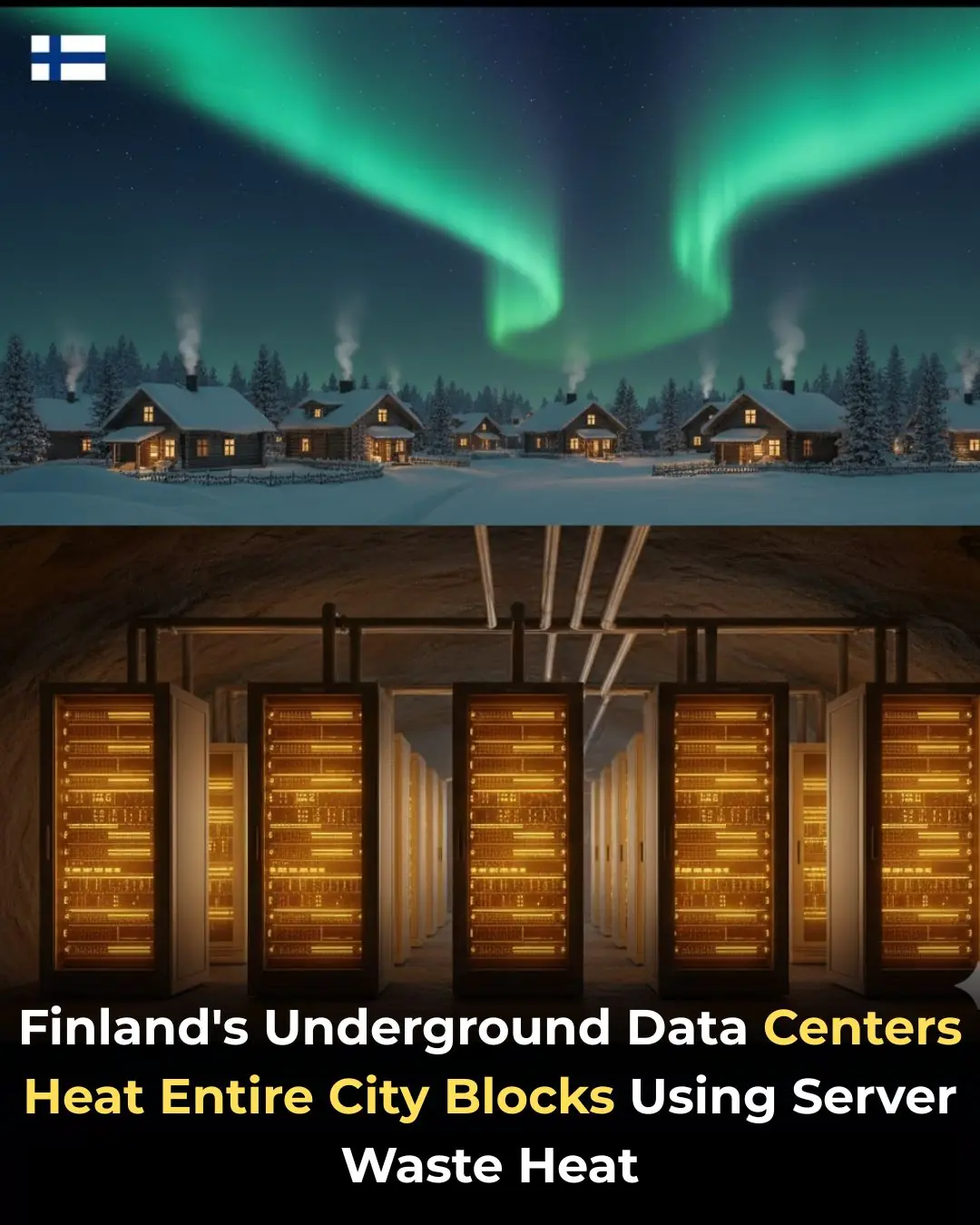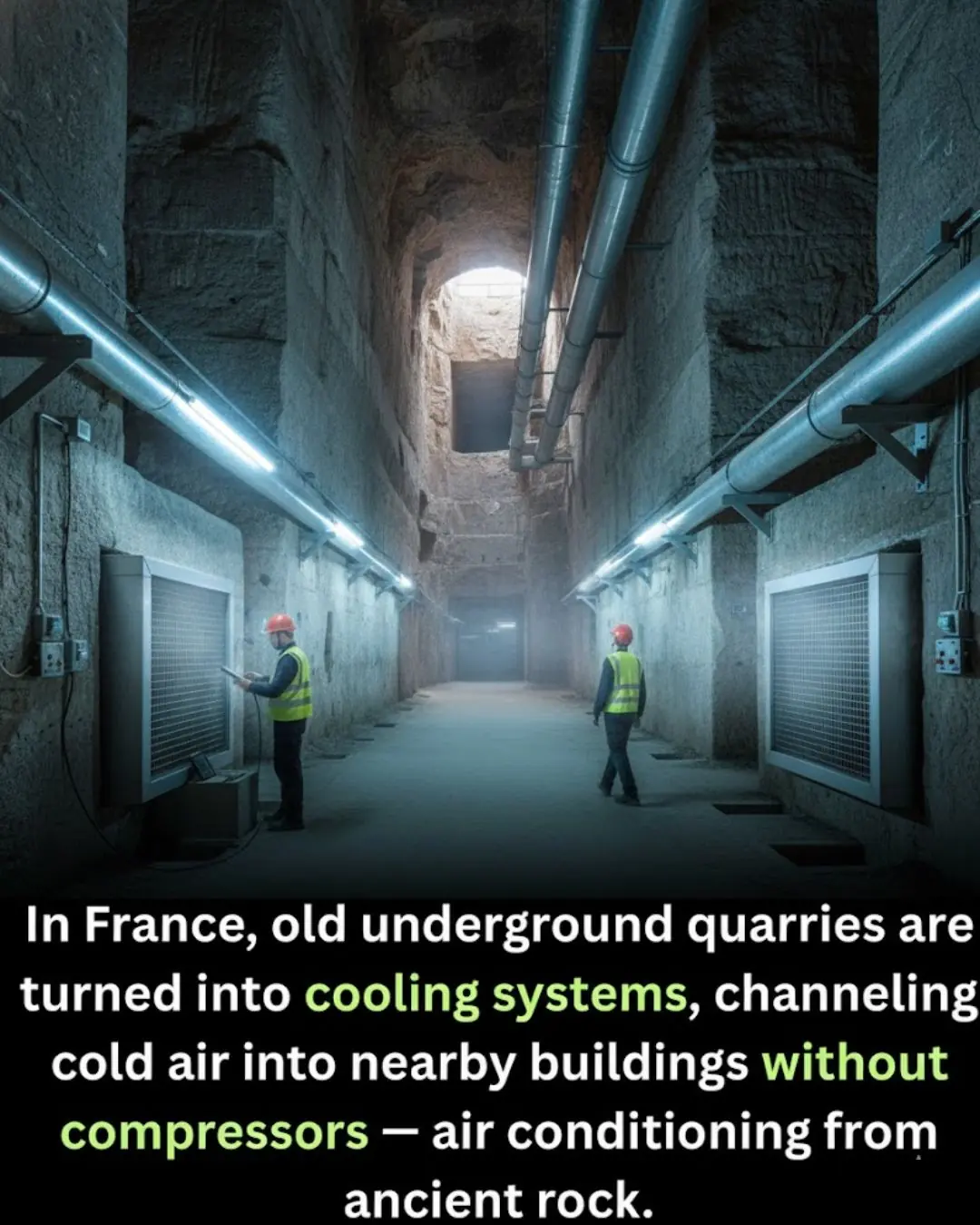
How Finland Is Turning Data Centers Into City-Wide Heating Systems

Finland is emerging as a global pioneer in transforming digital excess energy into real-world environmental benefits by using waste heat from data centers to warm homes and businesses. As our digital lives expand, data centers continue to grow in number and energy demand, generating massive amounts of heat as servers process information. Instead of allowing this heat to disperse unused into the air, Finnish engineers and city utilities have developed a system that captures it and transfers it into district heating networks that supply warmth to neighborhoods and commercial buildings.
Cities like Helsinki and Espoo are at the forefront of this breakthrough. In these areas, underground data centers are linked to advanced district heating systems, enabling the heat produced by server racks to be harvested, upgraded through heat pumps, and then piped directly into municipal heating infrastructure. This replaces a portion of the heat that would normally come from burning fossil fuels, helping Finland reduce emissions, improve energy efficiency, and move closer to national climate goals.
One of the most significant examples of this innovation is Microsoft’s upcoming data center project in the Helsinki region. Once operational, the facility is expected to supply waste heat that can warm the equivalent of up to 100,000 residents — an unprecedented deployment of digital waste heat at this scale anywhere in the world. The project represents a collaboration between Microsoft and the Finnish energy company Fortum, and it stands as a model for how global technology corporations can integrate their infrastructure with local sustainability systems.
The concept is deceptively simple: data centers run constantly and produce steady heat around the clock. Finland’s district heating networks already serve more than half the country’s residents, making them the perfect platform for distributing this reclaimed energy. By connecting the two, Finland turns a technological by-product into a clean, local heating source that reduces reliance on imported fuels, improves energy security, and lowers carbon footprints.
This system highlights a broader truth about the future of energy: major gains may come not just from new power sources, but from capturing and reusing energy that is already being produced. In Finland, that shift is not a distant plan or theoretical model — it is already happening beneath the streets, warming buildings today. Through a combination of engineering foresight, public-private collaboration, and innovative digital infrastructure, Finland is proving that smart cities can turn modern technology into climate solutions, not just power consumers.
News in the same category


Reinventing the Underground: How France’s Ancient Quarries Are Cooling Modern Cities

‘We’d Rather Throw $60K in a Club’—NBA Star J.R. Smith Confesses to Blowing Fortunes on Clubs Instead of Helping His Community

‘Doesn’t Qualify Because She’s Black’: Fans Of Angel Reese, A’ja Wilson Blast Forbes For Ranking Caitlin Clark ‘Most Powerful’ Woman Athlete In Sports

Keith Olbermann suggests he dodged a bullet as he gloats over ex-girlfriend Olivia Nuzzi’s latest scandals

What Sydney Sweeney and Tom Cruise talked about during Governor Awards: lip reader

Freddie Slater’s EastEnders exit ‘revealed’ in new spoilers

Spandau Ballet star Tony Hadley admits he’s watching ex-bandmate Martin Kemp on I’m A Celebrity amid long-running rift

Inside I’m A Celebrity star Angry Ginge’s relationship with his dad – ‘massive racist’; court battles; throwing a ‘brick through the window’

BBC Strictly's La Voix forced to pull out of Blackpool week after injury

Coronation Street couple split confirmed as heartbroken Carla tells Lisa 'it's over'

Coronation Street's Tina O'Brien reveals her father has died as she says 'my heart is very heavy'

Reimagining Mall Rooftops in the Philippines: Elevated Tents Offering Safety, Dignity, and a Breath of Calm

Coronation Street's Lucy Fallon shows off huge ring as she announces engagement

MAFS UK's 'strongest' couple split after romantic display at reunion

Inside Shona McGarty’s love life – from romance with two EastEnders co-stars to failed first engagement

I’m A Celebrity star Alex Scott on her ‘violent’ upbringing and impact on relationship with girlfriend Jess Glynne

I’m A Celeb 2025 star Aitch slammed as ‘disrespectful’ after exposing ex for soiling the bed

Riot Women ending: Kitty’s double prison twist as Sally Wainwright drama concludes series one on BBC One
News Post

Ravi kidnapped by drugs boss in early EastEnders release

🦵 Swollen Legs and Feet: Causes, Symptoms & Natural Relief Methods

🌿 If You Have These Two “Dimples” on Your Lower Back, Here’s What They Mean

Reinventing the Underground: How France’s Ancient Quarries Are Cooling Modern Cities

‘We’d Rather Throw $60K in a Club’—NBA Star J.R. Smith Confesses to Blowing Fortunes on Clubs Instead of Helping His Community

‘Doesn’t Qualify Because She’s Black’: Fans Of Angel Reese, A’ja Wilson Blast Forbes For Ranking Caitlin Clark ‘Most Powerful’ Woman Athlete In Sports

How Israel Is Turning Water Pipes Into Clean Power Plants

How Wisdom Teeth Could Power the Next Generation of Regenerative Medicine

This one vitamin could help stop you from waking up to pee every night

Scientists uncover how chronic stress may starve the brain of blood flow

Keith Olbermann suggests he dodged a bullet as he gloats over ex-girlfriend Olivia Nuzzi’s latest scandals

What Sydney Sweeney and Tom Cruise talked about during Governor Awards: lip reader

Freddie Slater’s EastEnders exit ‘revealed’ in new spoilers

Spandau Ballet star Tony Hadley admits he’s watching ex-bandmate Martin Kemp on I’m A Celebrity amid long-running rift

Inside I’m A Celebrity star Angry Ginge’s relationship with his dad – ‘massive racist’; court battles; throwing a ‘brick through the window’

The Hidden Power of Common Blue Violet (Viola sororia) and Its Homemade Uses

Japan's Oldest Doctor: Can’t Sleep Through the Night? Use Garlic This Way for Deep Rest in 3 Nights

Glow From Within: Easy Morning Drink For Radiant Skin
